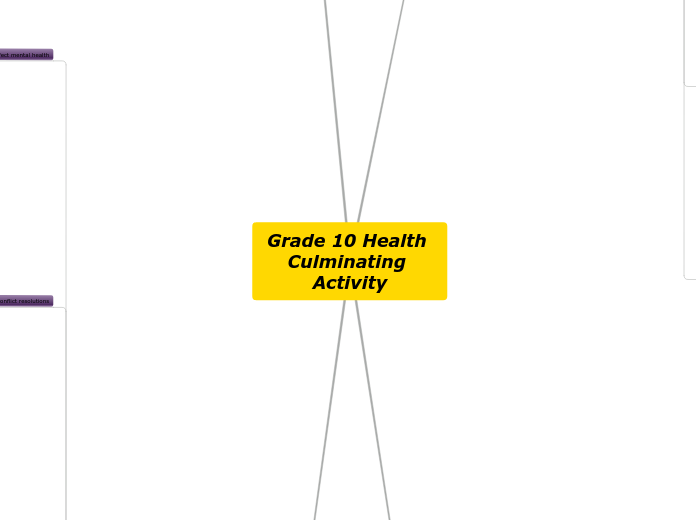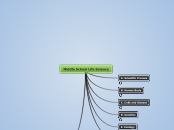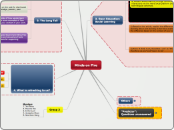Grade 10 Health Culminating Activity
Personal Safety and Injury Prevention
Signs of mental health
Bad mental health
Good Mental Health
Types of communication
Aggressive communication (What it looks like)
Hurts others to avoid being hurt
Only considers what they want
Glares at others
Speaks louder
Interupts and talks over others
Finger pointing
Eye rollong
Arms crossed
Ignores others rights
Defensive or hostile when confronted by others
Expresses their needs and desires and does not take into account the welfare of others
Passive communication (What it looks like)
Hurts self to avoid hurting others
May not know their goals
Does not reach goals
Values self less than others
Withdraws
Slouches
Shows little or no expression
Speaks softly
Afraid to speak
Failing to make eye contact
Deferring to others for decision making
Ignoring your own personal rights
Avoids expressing their own opinions or feelings
Assertive communication (What it looks like)
Open posture and expressions
Shows expressions that match the message
Makes good eye contact
Uses a conversational tone
Speaks openly
Take responsibility for your own actions without judging and blaming others
Recognizes your rights as well as respecting the rights of others
Doesn't come naturally to everyone
Speak up for yourself in a way that is honest and respectful
Healthy way of communicating
Communication skills
Don't avoid the issue
Pause and take a breath
Listen to others
Appreciate everyones differences
Team building activities
Get to the root of the problem
Consider everyones opinion and be open to new ideas
Use negotiating skills
Address problems before they get worse
Create an environment that promotes collaboration
Stress
How to deal with it
Subtopic
Take a break
Eat healthy
Manage your time
Keep a diary
Talk to someone
Relaxation techniques
Engage in productive daily activities
Maintain fulfilling relationships
Causes
Trying to please everyone around you
Change
Unrealistic expectations
Fear or uncertainty
Taking care of a sick family member
Traumatic events
Giving speeches
Facing discrimination or harassment
Having too much responsibility
Heavy workload
Working long hours
Emotional problems
Increase in financial obligations
Loss of a job
Divorce
Death of a loved one
Conflict resolutions
Resolve with others
Giving yourself time to think
Taking a break
De-escalation techniques
Seek common ground
Get support
Compromise
Resolve with yourself
Do something you love
Listen to music
Talk with a friend or trusted adult
Counselling
Journal writing
Meditation
Factors that effect mental health
Internal factors
Understand ones culture and identity
Making healthy choices
Social competence
Ability to use coping and self monitoring skills
Clear sense of self
Personal characteristics
External factors
Feeling safe and having a sense of purpose
Having a supportive family, trusted adults, and friends
Having a clean environment
Being given boundaries and expectations
Having a supportive network
Physical Activity and Fitness
In gym class we...
Be nice to everyone
Use equipment properly
Participate
Always have shoes
Always have a change of clothes
Be on time
Have fun
Be a good team member
Respect the rules
Factors and barriers that effect a persons activity level
Homework
Cultural support
Lack of support
Availability
Chores
School
Money
Weather
Jobs
When and how much activities we should do
Teens should aim between 8 and 15 reps per strength training exercise
It is recommended that teens do strength training three times a week
Teens need at least 60 minutes of cardio each day
Activities we did this semester
Weight room activities
Assisted pull ups
One arm cable lateral arm raises
Bicep cable curl
V-sits
Wall sits
Sit ups
Russian twist
Dumbell row
Shoulder press
Push ups
Plank
Arm extensions
Leg extensions
Bike
Seated chest press
Tricep push down
Skipping
Chest fly
Lat pull down
Seated row
Calf raises
Sports
Baseball
T-chouk ball
Volleyball
Football
Handball
Soccer
Rugby
Ultimate frisbee
Badminton
Basketball
Warm-up activities
Octopus
Flag tag
Open/ close legs
Super man
Frankenstein
Sweep
Running
Nutrition and Healthy Eating
Current dietary trends
Vegan
Raw food diet
DASH diet
Atkins diet
Mediterranean diet
Keto diet
Dairy free
Vegetarian
Gluten free
Foods you should try to avoid
Cookie
Ice cream
Coffee cakes
Pizza
pastries
Most fruit juices
Candy bars
Sugary drinks
Potato chips
French fries
Short and long term effects of food choices
Long term pros and cons
reduce risk of high blood pressure, stroke, cancer, and diabetes
No digestion issues
Clearer skin
Dental defects
Bowel cancer
Lymphoma
Short term pros and cons
Lactose in tolerance
Boost in energy
Promote wellness
May loose weight
Skin may clear up
Irritability
Bone loss
Malnutrition
Factors that effect eating habits
Culturally
Desire to be more energetic or maintain a healthy weight
Environmental concerns related to food production
Concerns about the treatment of animals
Desire to eat local food
Celebration
Peer pressure
Pleasure
Comfort
Physically
Level of physical activity
Body image
Food allergies
Substance Use and Abuse
Effects of drug use
Psychologically
Flashbacks
Depression
Anxiety
Confusion
Hallucinations
Violent, erratic, or paranoid behavior
Socially
Overpact institutions
Public impairment
Broken families
Public wellfair
Lead to homelessness
Kicked off teams
Emotional strain
Emotional trauma
Crime
Child abuse
Domestic violence
Drive away friends
Financially
Substance costs
Job loss
Legal fees
Insurance cost
Addiction centre costs
Cost of healthcare
Expensive
Loss of income
Emotionally
Annoyed
Fear
Devastating
Low self-esteem
Resentment
Regret
Anxious
Resignation (giving up)
Depressed
Completely empty inside
Trauma
Helplessness
Guilt
Crisis
Sad
Frustrated
Worried
Angry
Physiologically
Changes can still be present even after the person has stoped using drugs
Neurons start to die because some drugs are toxic, when neurons die peoples ability to feel pleasure is reduces and they usually start to feel depressed, lifeless, and flat
Drugs take control of the reward circuit and the brain remembers causing you to seek and use the drug again
Some drugs fool our receptors which send abnormal messages through the brain
When drugs enter your brain they change how your brain sends, receives, and processes information
Drug use continuum
Stages
Stage 5: (Dependence) User experiences a physiological and/or psychological need, feels out of control, use the substance alone and starts to alter their way of life
Stage 4: (Regular use) Predictable pattern and actively seeks to experience the drug
Stage 3: (Occasional use) Infrequent and irregular, availability, accessibility, and affordability influence use
Stage 2: (Experimental use) Has tried a substance once or several times, often motivated by curiosity and peer influence
Stage 1: (Non-use) Never used a particular drug
What is it?
A general guideline of how many people progress through various stages of drug use (there are 5 stages)
Not all users hit all points on the continuum









